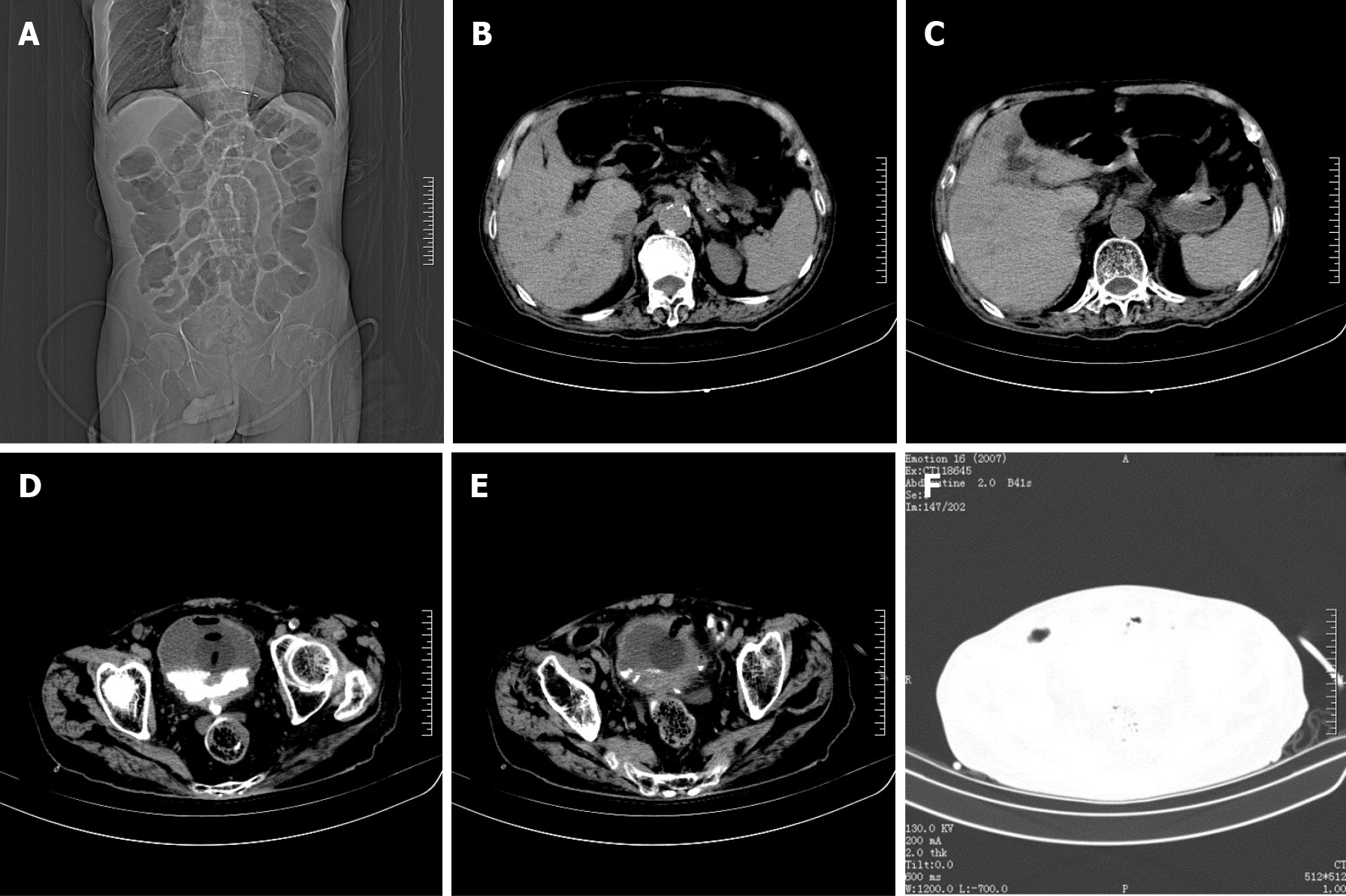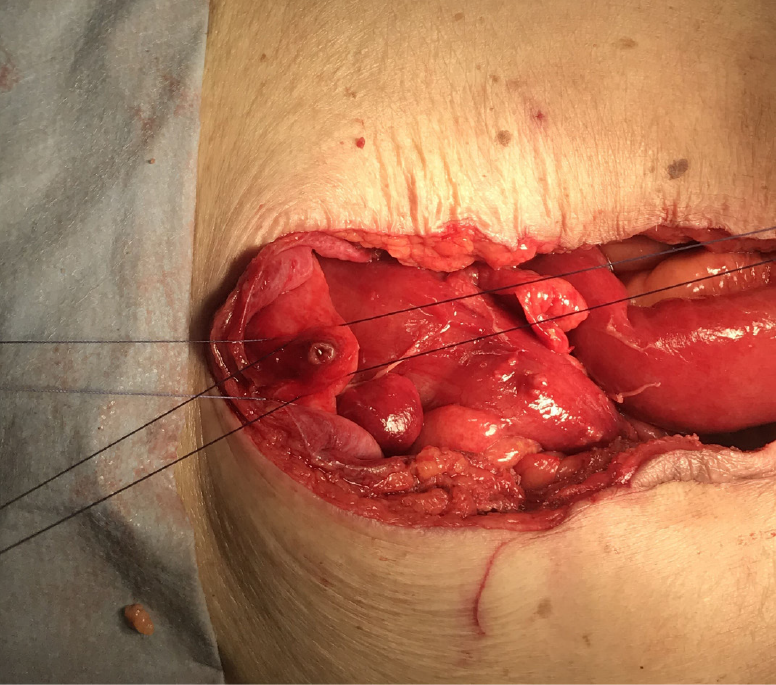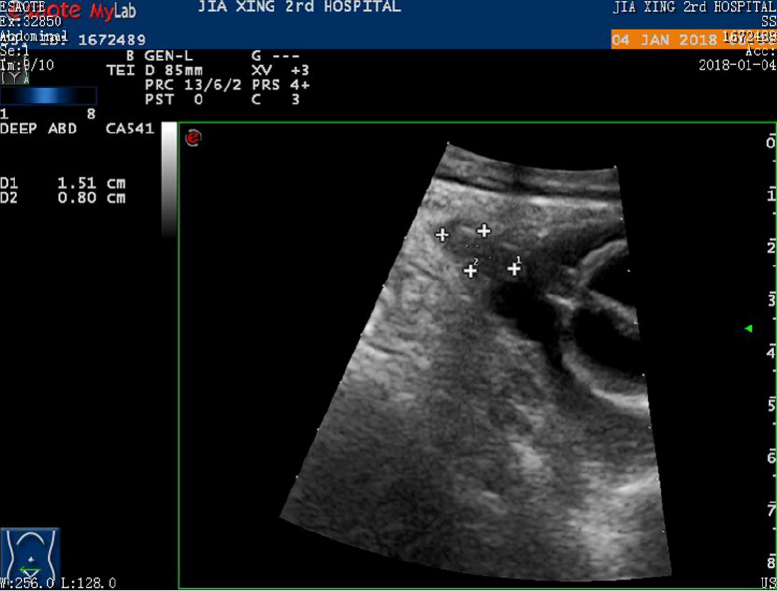Copyright
©The Author(s) 2020.
World J Clin Cases. Oct 26, 2020; 8(20): 4993-4998
Published online Oct 26, 2020. doi: 10.12998/wjcc.v8.i20.4993
Published online Oct 26, 2020. doi: 10.12998/wjcc.v8.i20.4993
Figure 1 Computed tomography image of the patient’s abdomen before surgery.
A: The catheter was indwelling, and the intestinal cavity was dilated; B: A small amount of free gas in the abdominal cavity; C: A small amount of effusion around the liver and spleen; D and F: Air collected in the bladder; E: The bladder wall was thickened, and the end of catheter was sighted in the bladder wall.
Figure 2 Images from the laparoscopic exploration.
A: Dark red fluid was found accumulated around the liver; B and C: A large amount of purulent fluid and purulent moss can be seen in the abdominal cavity and intestine.
Figure 3 Intraoperative photograph of the patient.
A perforation is seen in the upper wall of the bladder with a diameter of approximately 5 mm.
Figure 4 Ultrasound image from a year prior.
Ultrasonic image showing the insertion of the urinary catheter terminal into the mucosal layer of the bladder.
- Citation: Wu B, Wang J, Chen XJ, Zhou ZC, Zhu MY, Shen YY, Zhong ZX. Bladder perforation caused by long-term catheterization misdiagnosed as digestive tract perforation: A case report. World J Clin Cases 2020; 8(20): 4993-4998
- URL: https://www.wjgnet.com/2307-8960/full/v8/i20/4993.htm
- DOI: https://dx.doi.org/10.12998/wjcc.v8.i20.4993
















